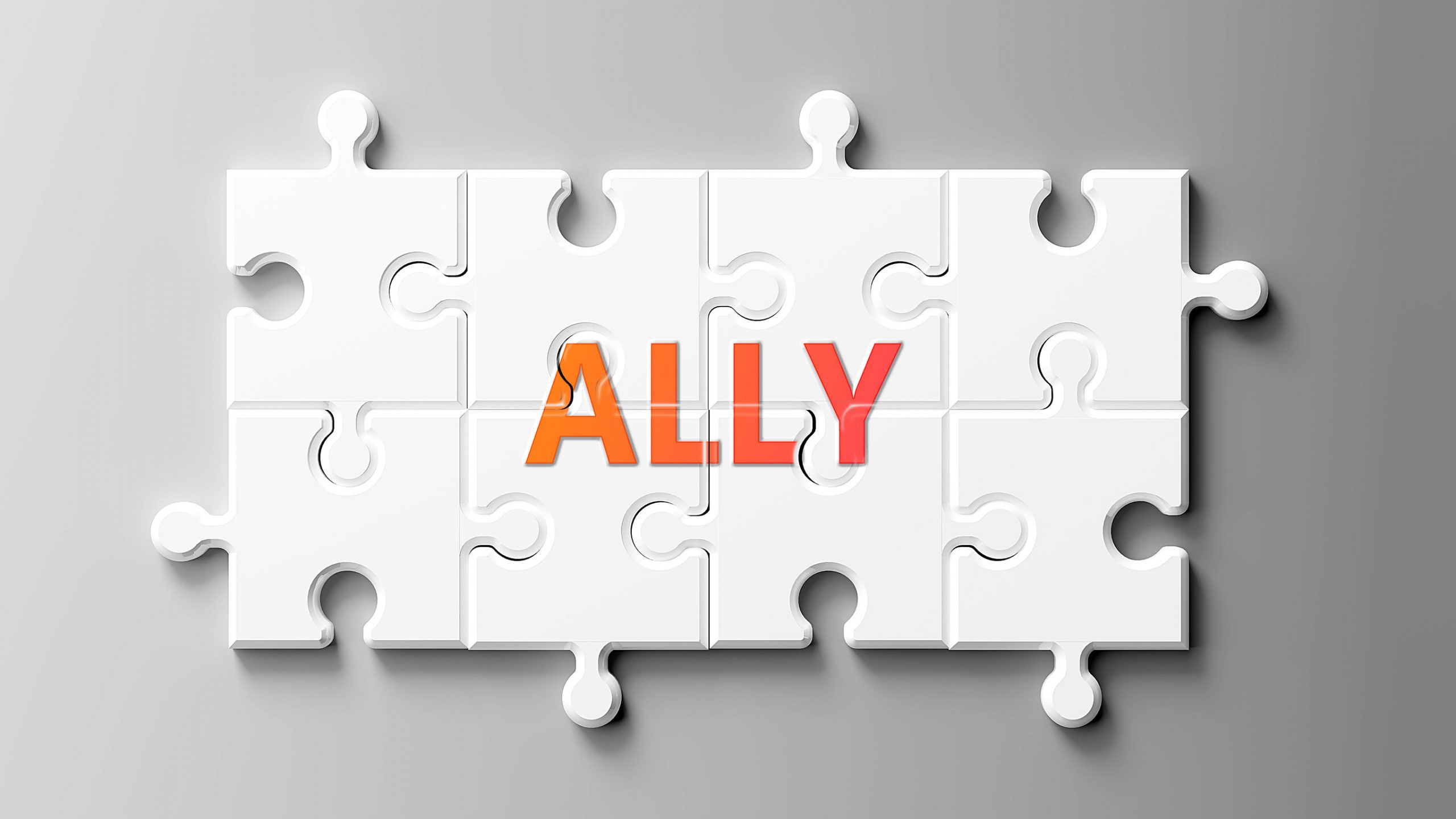3 steps to start your journey as an ally in communications
Language can reinforce or dismantle status quo. When it comes to racial justice in our organizations, communicators must be ready to lead.

The grace period between having made your social injustice statements and when you must report meaningful diversity, equity, and inclusion (DE&I) progress is expiring.
If your team hasn’t yet had necessary group discussions, listening sessions, conversations with employee resource groups, inclusion councils and talked out loud about a meaningful action plan that is informed and approved by those who benefit most from the changes, you’re running out of time.
Some of us and our leaders are in freeze mode without knowing what to do or what to say and are scared to say anything (read “What If I Say the Wrong Thing?“ by Vernā Myers). Some are in flight and laying low in hopes everything will just go back to normal. (It won’t; it can’t.) Some are pushing back against the tide of equality and equity, and are at a crossroads of evolving or being left behind.
By the time the economy improves, if internal work hasn’t been done, personally and professionally, there will be economic, talent and reputational consequences. Even if your organization had to go through layoffs or furloughs, your company must invest—both time and money—to do the work needed to nurture an inclusive culture that expels mindsets that are counterproductive to where organizations must go to stay relevant, viable and socially responsible.
Let’s not be even further behind a year from now; let’s get our stuff together.
Communications teams are central to this work. We are complicit in reinforcing or dismantling the status quo depending on our word choice, visuals, videos, messaging, and the representation within our teams. Here are three ways to begin the work:
1. Invest time and money.
I can tell a lot about what’s most important to you if I look at your calendar and your bank account. The same is true for a company.
A budget is a moral document and our time is the most valuable asset we have to give. As strategic planning and budget resources are discussed for our next fiscal year, the company and the communications team must invest time and money to do a benchmark DE&I IQ Assessment for communications and culture, as well as other ongoing learning and taking meaningful action to be socially just. I stress “meaningful” action because actions of the past were created by leaders with privilege—and not with the voices and participation of those who would benefit the most. We have to do our internal work, as taught to me by my mentor, a multi-decade diversity trainer, Deborah L. Johnson, and we have to accomplish the steps in order: Feel. Deal. Heal.
- If you’re in the majority, feel the urgency of these times, the guilt, the anger, whatever it may be on our journey of understanding our role and responsibility both personally and professionally.
- As we continue to learn, we must deal with the status quo. Look at what is within our control, what is before us to do to bring more (or different) voices to the table. What is your role in helping your team, leaders, people managers and overall organization deal with the realities of where the company has fallen short in supporting equity within processes, policies and systems?
- Then, and only then, can healing happen, when voices are heard, access and equity are available, respect shown, privilege used to lift everyone and all employees set up to succeed.
- Many people are jumping over the feel step to the deal step with a “fix it” mindset. That’s the approach that got us to where we are today. We have to truly empathize and feel the shift before taking steps to heal our cultures, workplaces and ourselves.
2. Be consciously aware of our own bias.
Everyone has bias. It’s socially constructed throughout life and becomes visible when triggered (read more from Dr. Jennifer Eberhardt’s book, “Biased: Uncovering the Hidden Prejudice That Shapes What We See, Think, and Do”).
- Bias shows up in communications when we put the job category “customer care” next to a photo of a young, Black man while we have a photo of a mid-40s white woman next to the “corporate” job category.
- It can show up in how we tag and search terms in social images. White folks simply don’t think to call out race in an image if the image just has white people in it.
- It can show up as having an entirely white production crew recording underrepresented folks for a corporate recruiting video, asking them to smile and look happy. We can dip into tokenism which has its roots in minstrel shows and can reinforce stereotypes.
- In storytelling, find narratives that don’t just regurgitate key messages and what we “hope” they will say. Tell stories from those who will tell you an unfiltered account of their experience in a psychologically safe space. Stories need to be attached to an action. Otherwise, stories are told in vain and more trust can be broken.
3. Incorporate inclusive design principles into communications processes.
If we continue running the processes we’ve always done, we’ll continue to get what we’ve always gotten.
- We have to change how we create, who creates, who writes, how work is reviewed, who is approving, and what singular or intersectional perspectives get represented.
- We must hire, mentor and sponsor talent to be representative of possibility, which makes decisions more fully informed, and which leads to innovation and creativity, which leads to improved relevance of our work.
- Questioning our processes and unearthing embedded inequities is critical.
If we want more DE&I as a result, we must have DE&I in the process. If we want to have a diverse team, we must live a diverse life.
More to come on this topic, more work to be done, more opportunities for communications to lead this work so keep an eye on this column.
“You must be bold, brave, and courageous and find a way…to get in the way.” — Rep. John Lewis
Kim Clark is an affiliate consultant with Ragan Consulting Group and specializes in diversity, equity, and inclusion communications, transforming work culture, and internal communications. Schedule a free 30-minute “pick Kim’s brain” session here. Join her Conscious Communicators LinkedIn group here.
Get more insights about the latest best practices around Diversity and Inclusion for communicators by joining Ragan’s The Communicator’s Role in Diversity, Equity & Inclusion Sept. 17-18.








Interesting this is about inclusion but the links are all in a very light blue, making it difficult for anyone with vision impairment to read them (hover color changes don’t work in this context – imagine if you had to hover over every link to see what it said).